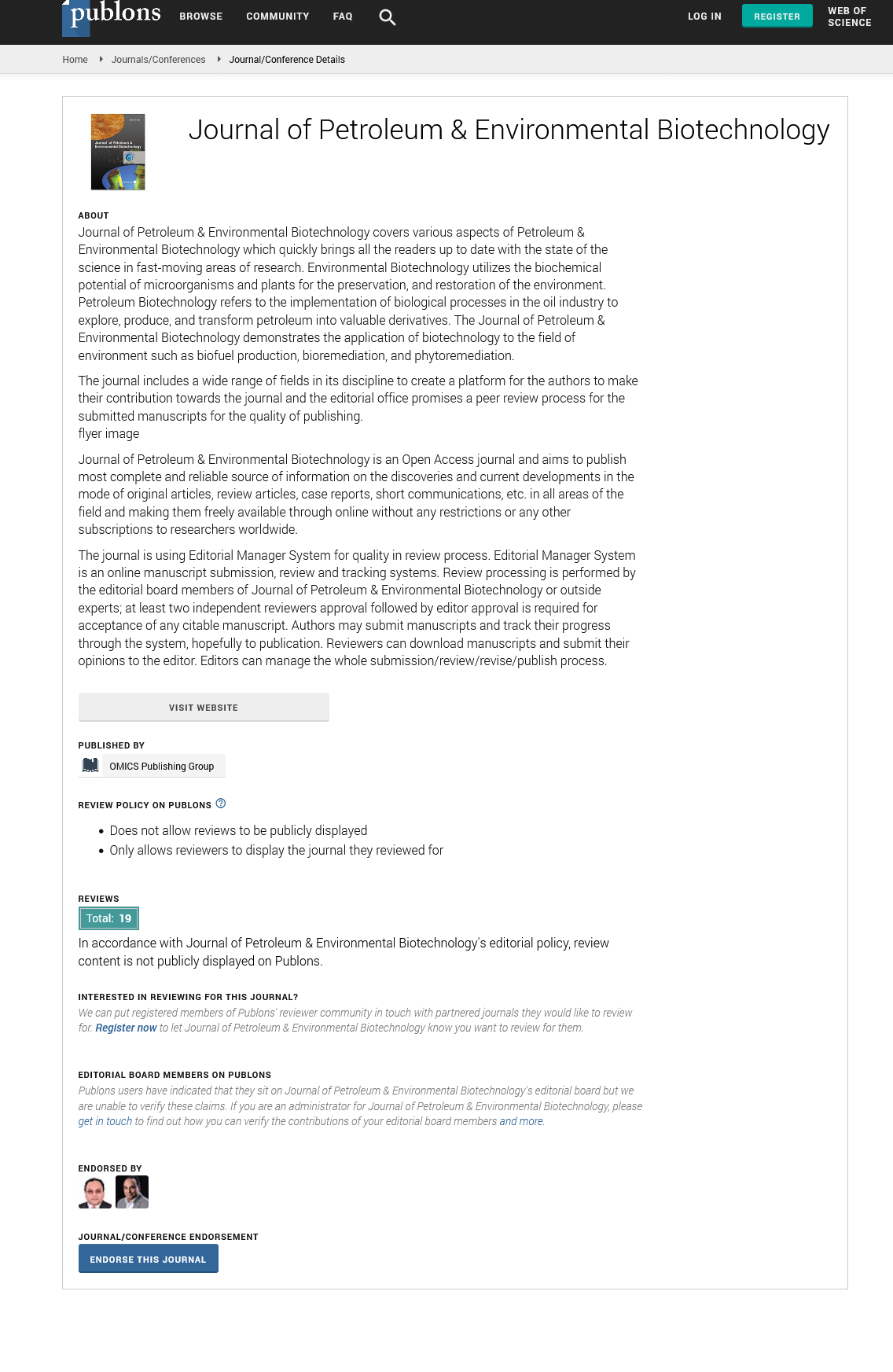Indexed In
- Open J Gate
- Genamics JournalSeek
- JournalTOCs
- China National Knowledge Infrastructure (CNKI)
- Electronic Journals Library
- RefSeek
- Hamdard University
- EBSCO A-Z
- OCLC- WorldCat
- SWB online catalog
- Virtual Library of Biology (vifabio)
- Publons
- MIAR
- Euro Pub
- Google Scholar
Useful Links
Share This Page
Journal Flyer

Open Access Journals
- Agri and Aquaculture
- Biochemistry
- Bioinformatics & Systems Biology
- Business & Management
- Chemistry
- Clinical Sciences
- Engineering
- Food & Nutrition
- General Science
- Genetics & Molecular Biology
- Immunology & Microbiology
- Medical Sciences
- Neuroscience & Psychology
- Nursing & Health Care
- Pharmaceutical Sciences
Association of DAPK1 gene methylation with the prognosis in epithelial ovarian carcinoma (EOC) patients
AB Rashid Mir, Imtiyaz Ahmad Najar, Prasant Yadav, Jamsheed Javed, Mariyam Zubari, Shazia Farooq, Gauri Gandhi, Prakash C Ray, Sagar Dholariya and Alpana Saxena
Abstract:
Background: Novel strategies for early detection of EOC, the most common and second most lethal cancer in Indian women, are urgently needed. Silencing tumor suppressor genes via DNA methylation has established hypermethylation as one of the most frequent molecular alterations that may initiate and drive many types of human neoplasia including EOC .To determine the alterations of tumor suppressor gene DAPK1 gene in EOC patients to explore the possibilities of identifying potential minimally invasive markers in blood of the patients, which could help in the clinical practice as a diagnostic and prognostic marker. Methods: Fifty EOC patients with primary epithelial ovarian cancer were selected for the study; Genomic DNA extracted from fresh peripheral blood & serum followed by sodium bisulfate modification .The p16 methylation was detected using methylation- specific PCR (MSP). The DAPK1 gene methylation status was correlated with age, stage, menopause, Ca125.5 and clinic pathological features. Results: The frequencies of DAPK1 gene methylation in EOC patients were found to be 68%. The significant association was seen with age at diagnosis, menopause and stage (P = 0.043). Patients with high methylation indices had poor prognosis (p<0.001, Hazards ratio=14.58) with age (P = 0.043), and tumor stage (P = 0.033). Aberrant methylation of DAPK1 gene was strongly associated with EOC patients (P = 0.037). Conclusions: Our results that the methylated loci of TSGs (DAPK1 gene) may be employed as clinically useful biomarkers for prognosis and diagnosis of EOC noninvasively using readily available body fluid by MS-PCR and proved to be efficient and cost- effective method

